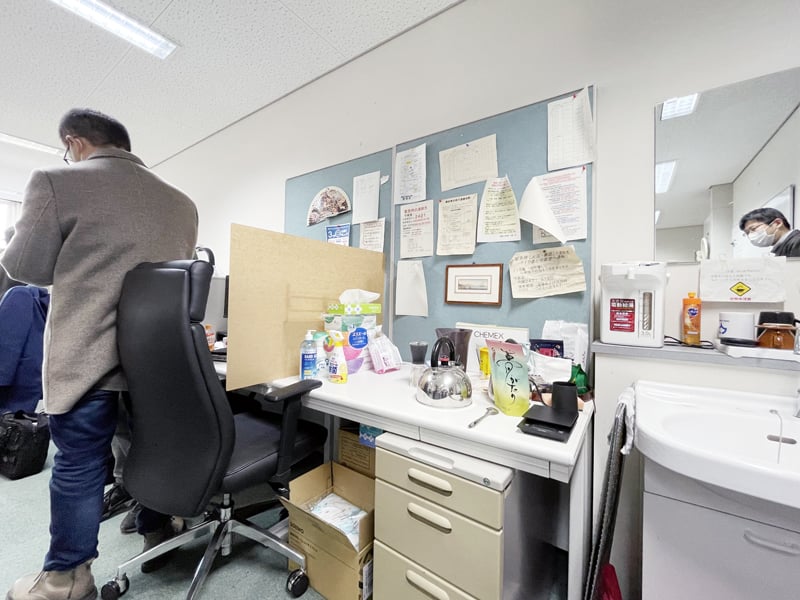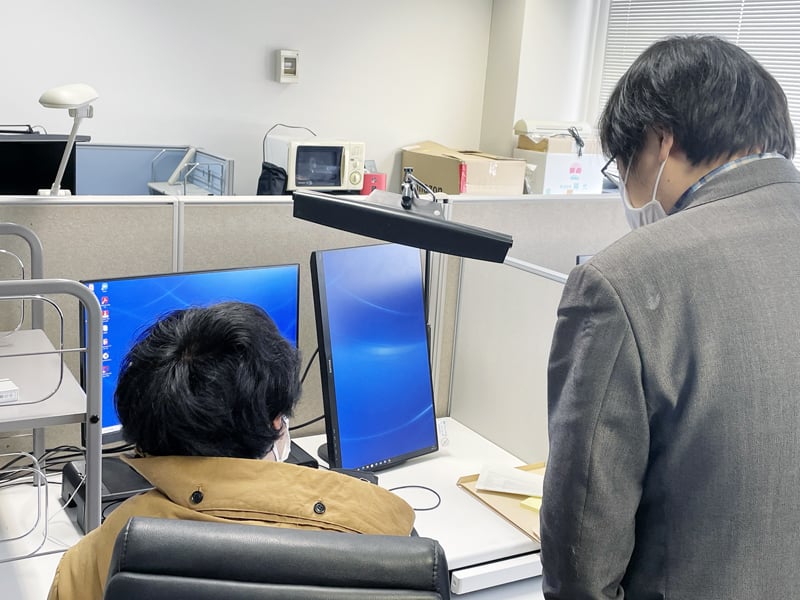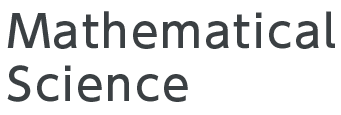Message
About this course
Students in this course engage in research and receive education on mathematical models for various phenomena in the real world. The following is an overview of our activities.
Mathematical approaches in modern science involve three steps: (1) creating a model of a phenomenon (called a mathematical model) using mathematics as a language, (2) examining the properties of the model using the power of modern mathematics, and (3) verifying the obtained results by comparing them with reality through experiments and observations. In particular, this approach uses mathematics in two different ways: (1) as a language to describe phenomena and (2) as a tool to analyze the resulting mathematical model.
Let us take a look at the example of fluid motion.
First, as to the mathematical model from step (1), the basic law that defines the motion of a fluid is the Conservation Law of Momentum. Specifically, fluid motion can be written as a nonlinear partial differential equation, namely the Navier-Stokes equation. (2) Next, we examine the mathematical nature of the equations using pure mathematical theories such as functional analysis and real analysis. (3) The resulting findings are then reduced to actual fluid motion. At this point, collaboration with researchers in experimental physics and engineering is important.
During the construction of the mathematical model for the phenomena in step (1), we can rarely apply already well-known laws of physics directly to create mathematical models (as is the case with fluids). Instead, we construct models based on empirical rules in many cases. Therefore, knowledge of applied science dealing with the phenomenon in question is also required. For example, with the mathematical model for electroporation, a cancer treatment method and one of the themes of this course, we mathematically model “what occurs when an electric field is generated in a living organism.” Likewise, modeling also requires knowledge on empirical rules. In step (2), it is difficult to analyze the resulting model by simply applying existing mathematical theories alone. So, we must often introduce new, pure mathematical theories that are consistent with the particularities of the model. For example, in 2000, US-based Clay Research Institute announced the Millennium Problem ($1 million prize contest), which called for proving that the Navier-Stokes equation is solvable. This equation remains unsolved today.
In this way, mathematical science is developing as phenomena and mathematics interact in such a way that mathematical models obtained from these phenomena provide new pure mathematical problems, and that the development of theories for pure mathematics leads to new analytical methods that are applicable for mathematical modelling. In recent years, mathematical modelling has become more actively researched and used in various fields beyond just natural phenomena, including economic phenomena such as finance and “information phenomena” such as neural networks.
Students in this course engage in research and receive education on mathematical approaches focusing on the relationship with phenomena. We hope that you will become interested not only in mathematics itself, but also in analyzing phenomena using mathematics and in learning how mathematics is useful in real-world situations.
Q&A for the course
Yes, it is. We research various phenomena using mathematics as a core science. In fact, our students come from a variety of departments, including science, engineering, information, agriculture, and life sciences. We also host many students from East and Southeast Asia.

Priority is given to the requests of our students.
If you do not have a particular advisor in mind, our instructors will listen to your interests and make suggestions afterwards.
If you have a specific research theme in mind, our instructors will talk to you about it, and an instructor who can handle your theme will supervise your research.
If you do not have a specific research theme in mind, you will typically select a theme through the following steps.
First, you will determine the general direction for your studies when you decide on an advisor.
Next, you will acquire the basics as preparation for your research before entering academics.
As you move through these steps, you will come across several research theme candidates.
You will then choose a theme from among these.

It depends on your advisor, but most advisors hold two-hour seminar presentations once a week.
The rest of the time is basically free.
You can prepare for your presentation anywhere you like, including the laboratory or your home.






